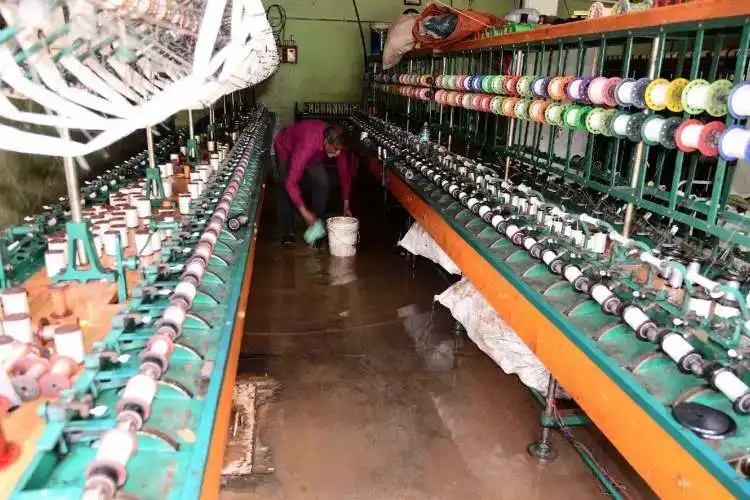
Srinagar
During the past three years, the Jammu and Kashmir Government has put in multiple efforts to develop agriculture and allied sectors in the Himalayan region.
A comprehensive "Agriculture Policy" is being framed to improve the standard of living of the farmers and to allow them to improve their yield, and produce the quality products.
One of the important allied sectors that the government has been focusing on in J&K is sericulture, one of the oldest industries in India and Asia.
Sericulture is an agro-cottage, forest-based industry, labour-intensive and commercially-attractive economic activity falling under the cottage and small-scale sector. Silk is the final product of this industry.
The government has embarked on a mission to restore the pristine glory of sericulture in "Naya Jammu and Kashmir". It has roped in scientists, officers, and farmers for the holistic development of the sector in the Union Territory.
Latest technologies and people-friendly government schemes have gone a long way in increasing the productivity of silk in the Union Territory.
The prime objective of the government is to make the lives of farmers associated with sericulture better so that this dream fabric manufactured indigenously in J&K reaches every nook and corner of the world.
Efforts are being put to preserve uniqueness, beauty, and genuineness of the fabric as the quality and craftsmanship are the hallmarks of J&K's crafts.
The Central and UT governments are providing training, technology inputs, IT tools and other infrastructure to support the required transformation of the sericulture sector in the Himalayan region.
.jpg)
Lt. Governor Manoj Sinha inaugurated a workshop on Sericulture in Srinagar in September 2022
A roadmap has been framed with an aim to come up with a product that would be able to compete in the international markets.
Government has identified veterans in the industry and their skills are being used to train the youngsters, who can carry forward their legacy.
The sector which till August 5, 2019 - when the Centre announced its decision to abrogate J&K's special status and divided it into two Union Territories, J&K and Ladakh - was in a moribund condition, has now got a new lease of life and is on the revival path.
The area under Mulberry plantation is being expanded to increase leaf availability for rearers and enrich green wealth. The Forest and Sericulture Departments are working closely to achieve the green mission in J&K.
Market infrastructures are being improved to facilitate the cocoon growers to sell their produce easily.
One of the three important centres in the country for Research and Development, Training, Transfer of Technology and IT Intervention has been set up at Pampore in Kashmir.
The Silk Samagra Yojana launched in 2017-18 has proved to be a game-changer in making sericulture sustainable by supporting the country's as well as J&K's silk industry in an integrated manner.
In the first phase of Silk Samagra, about 900 silkworm rearers were directly benefited and about 618 rearing houses were also established in Jammu and Kashmir.
The UT government has increased the revolving fund from Rs 70 lakh to Rs 3.50 crore. The Central Silk Board has allocated Rs 35 crore for J&K under Silk Samagra Phase-II benefitting around 27,000 families involved in sericulture in Jammu and Kashmir.
During the past one year, the 85-year-old Rajbagh Silk Factory situated at the banks of River Jhelum in Srinagar has seen eightfold increase in the production of the silk fabric. The production had declined owing to aging workers and old machines.
In Jammu, a silk weaving factory was established at Bari Brahmana in 2020. In the year 2020-21, the factory produced 4.50 lakh metre silk fabric and around 2,0000 families associated with the cocoon rearing in the Jammu Division were benefited due to it.
ALSO READ: Education takes precedence in ‘Naya’ Kashmir
The government has been tapping all the resources and is trying hard to put the silk industry in the Himalayan region back on the track. The helmsmen are not only focusing on the revival of the sericulture they are also putting in relentless efforts to infuse new lives into all the languishing crafts of J&K.
